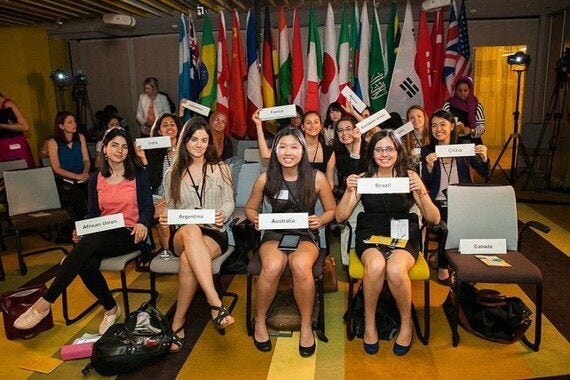What would happen if the world's 3.5 billion women set out to fix the biggest problems facing their communities?
The G(irls)20 Summit is bringing together young women from around the globe to answer that question. The goal: Use bold ideas to improve the fortunes of their home regions and, hopefully, the world. The 2013 Summit inspired Yoomin Lee of South Korea to start CodeKorea, a business that aims to increase the number of women in science, technology, engineering and mathematics industries by teaching girls computer programming. Glender Favour, a 2012 delegate from Cameroon, co-founded StopAIDS, Cameroon, an initiative that's providing young people with resources and opportunities to fight the spread of HIV.

As partners of the G(irls)20 Summit, we're excited to watch these ideas emerge. But turning a vision into the large-scale changes these social entrepreneurs seek requires a sound strategy. What does that look like? Over the years, we've seen many strategies take shape at major organizations. The best ones do several things right:
They focus on serving (and delighting) customers. Organizations, whether they're nonprofits or multinational companies, succeed only when they make their customers central to all of their decisions. They understand their customers' fundamental needs and offer services that resonate with them. They don't pursue hot opportunities that distract from their target audiences.
They know their strengths. Many nonprofits try to address too many issues at the same time, causing them to spread their resources too thin. To create the biggest impact, top companies invest heavily in the key businesses that set them apart from their competitors. They only consider other initiatives when they've exhausted every opportunity that's closely related to their core mission.
They know what they need to do to win. Leading organizations understand the conditions, potential obstacles and likely competitors in the markets in which they operate. For example, a nonprofit trying to combat obesity in children might require thorough knowledge of the factors that cause children to choose junk food and video games over fruit and exercise.
They create a consistent process they can apply again and again. It starts with an objective that's clear and achievable, and a strategy that everyone in an organization can get behind. As they work toward their goals, leading organizations constantly refine their efforts by collecting and learning from customer feedback. They eventually bring this finely honed approach to other markets, customers and problems. We call these Repeatable Models, and we consider them to be the keystone of any successful organization, helping it to rapidly expand and reach more people.
Creating lasting change is never easy, but one thing is clear: Great ideas and effective strategies can change the world, one girl at a time.
By Gary Turner, a Sydney-based partner and leader of Bain & Company's Asia-Pacific Financial Services practice. Gary also leads Bain & Company's pro bono and not-for-profit consulting practice in Australia.